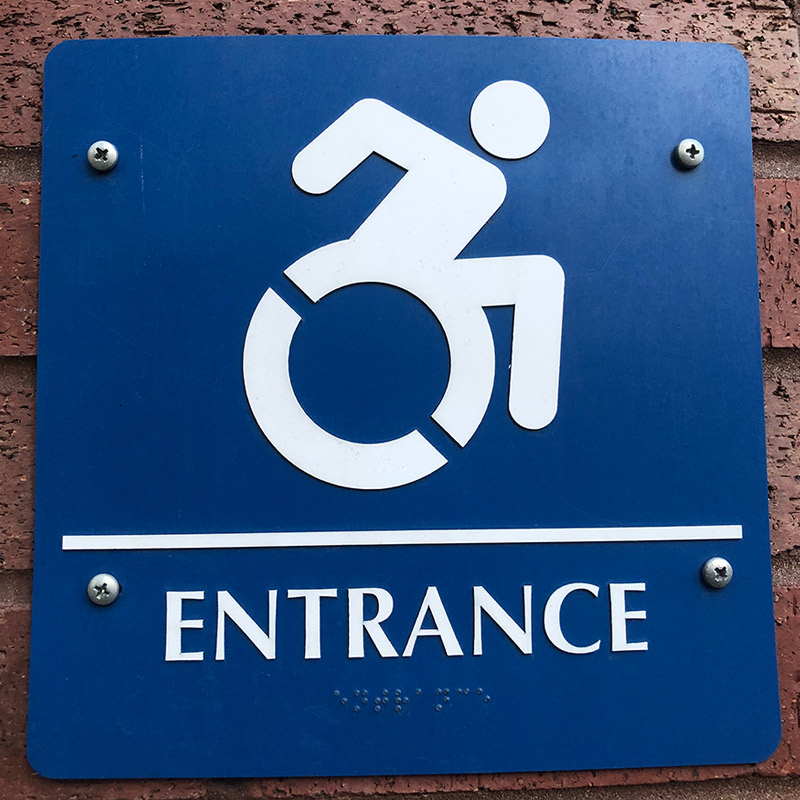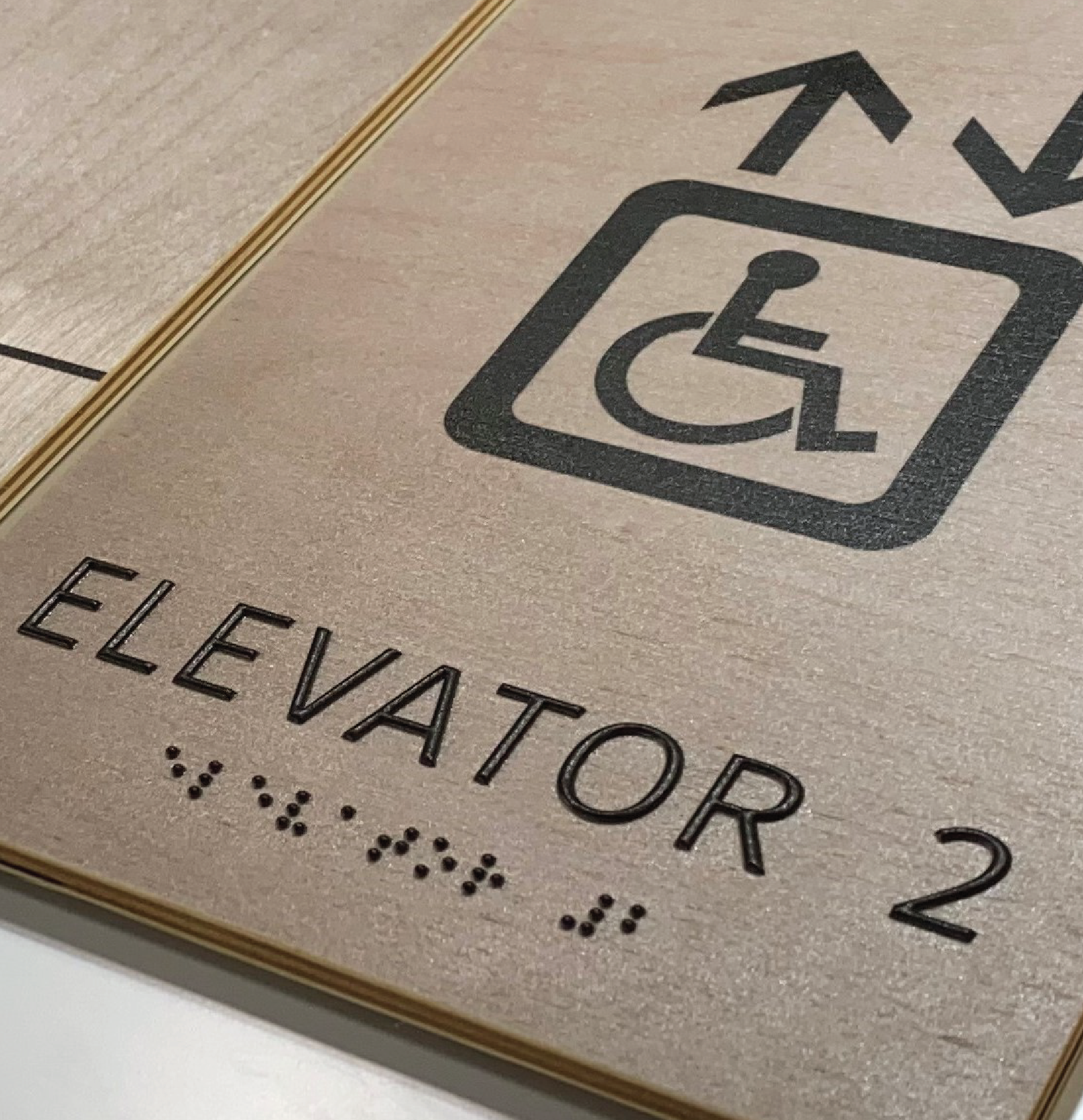A Comprehensive Overview to Choosing the Right ADA Signs
A Comprehensive Overview to Choosing the Right ADA Signs
Blog Article
ADA Signs: Guaranteeing Accessibility and Conformity in Public Spaces
ADA signs plays an indispensable duty in guaranteeing accessibility and compliance within public rooms, significantly contributing to an inclusive atmosphere for individuals with specials needs. As we discover the nuances of ADA signage, from tactile features to develop complexities, it's vital to think about just how these components integrate to promote the civil liberties of all customers.
Relevance of ADA Signage
In contemporary society, the importance of ADA signage extends beyond plain compliance with legal mandates to embody a dedication to inclusivity and access for all people. These indications are necessary in developing atmospheres where individuals with impairments can navigate public rooms with the very same convenience and freedom as those without handicaps. By giving standardized and clear information, ADA signage guarantees that everybody can access facilities, solutions, and info without barriers.
The relevance of ADA signage hinges on its ability to boost the lifestyle for people with handicaps by advertising equal gain access to. It removes the barriers that might or else impede their ability to get involved fully in area life. These signs serve as noticeable signs of an organization's devotion to diversity and equal rights, reflecting more comprehensive societal values that promote the civil liberties and dignity of all people.
Furthermore, ADA signs plays an important duty in public safety. By guiding individuals to exits, washrooms, and various other important centers, it makes certain that all people, no matter of physical ability, can evacuate securely throughout emergencies. In recap, ADA signage is not simply a regulative demand yet a powerful device for fostering a comprehensive and equitable culture.
Crucial Element of Conformity

Positioning is crucial; signs should be installed in locations that are easily visible and reachable. Usually, signage ought to be mounted between 48 and 60 inches from the ground to ensure ease of access for both standing and mobility device individuals. Tactile aspects, such as Braille, are important for individuals with aesthetic problems, supplying critical details in a non-visual layout.
High-contrast colors between the text and history are needed to boost readability for people with low vision. The ADA mandates particular contrast ratios to make certain quality. Additionally, personality dimension is a crucial consideration, with minimal elevation requirements determined by the checking out distance to make certain readability from different angles.
Style Considerations for Access
Designing accessible signs needs a meticulous strategy to ensure it meets the needs of all customers, especially those with disabilities. This entails thinking about various style elements that enhance readability and functionality. Key aspects include the option of font, color contrast, and responsive features. Typefaces need to be sans-serif, with clear and basic letterforms, to facilitate simple analysis. The size of the message is equally vital, with ADA guidelines suggesting a minimum height based upon seeing range to make sure clarity.
Contrasting colors between text and history are important for visibility, especially for individuals with visual impairments. Additionally, site web tactile components, such as Braille and elevated personalities, are crucial for people who are blind or have low vision.
Furthermore, the positioning of signs plays a substantial function in ease of access. Signs should be installed in areas that are unobstructed and conveniently obtainable. Making sure that signage is mounted at ideal heights and angles makes it possible for all users, including those making use of wheelchairs, to interact with them effectively.
Usual Errors to Avoid

One more widespread error is the wrong placement of signs. ADA guidelines define accurate height and place requirements to make sure that signs are conveniently visible and obtainable by all people, consisting of those making use of wheelchairs. Disregarding these standards not only interferes with ease of access yet likewise takes the chance of non-compliance with legal criteria.
Additionally, not enough contrast between message and history is a frequent oversight. Appropriate comparison is vital for readability, specifically for individuals with reduced vision. Developers sometimes select shades that are aesthetically appealing however lack the needed comparison, providing the text tough to recognize.
Lastly, some designers stop working to include responsive elements, such as Braille, which are important for people that are blind. Leaving out these features not only leads to non-compliance with ADA see page guidelines yet additionally restricts access for a segment of the population that counts on responsive details.
Future Trends in Signs
Innovations in innovation and raising recognition of inclusivity are forming the future patterns in signage layout. Digital signs, for instance, is developing to consist of interactive features and real-time updates, which can be important in giving vibrant info in public spaces.
One more arising pattern is the application of augmented reality (AR) to enhance individual experience. AR-enabled signage can overlay electronic information onto the physical setting, offering visually impaired people with auditory or haptic feedback. ADA Signs. This modern technology not only boosts availability but also develops an engaging experience for all customers
Sustainability is also a considerable factor influencing signs trends. Green products and energy-efficient lighting options are being prioritized to align with international ecological goals. Improvements in materials scientific research are leading to the growth of more weather-resistant and long lasting indicators.
Verdict
ADA signage plays an important role in ensuring access and conformity within public spaces by incorporating tactile aspects, high-contrast colors, and calculated placement. The adherence to ADA criteria not only helps with risk-free navigation for individuals with specials needs yet additionally represents a company's commitment to diversity and inclusivity. By preventing typical errors and accepting future patterns, public areas can remain to advance these values, guaranteeing that the legal rights and dignity of all individuals are respected and upheld.
ADA signs plays a vital duty in guaranteeing ease of access and compliance within public spaces, significantly adding to a comprehensive atmosphere for individuals with disabilities. As we discover the subtleties of ADA signage, from tactile features to make details, it's critical to take into consideration just how these aspects coalesce to copyright the civil liberties of all individuals.In modern culture, the relevance of ADA signage extends past simple conformity with lawful mandates to personify a commitment to inclusivity and ease of access for all people. By giving clear and standard details, ADA signage ensures that every person can access facilities, solutions, and information without obstacles.
ADA signage plays a vital function in guaranteeing access and compliance More hints within public rooms by integrating responsive aspects, high-contrast shades, and critical positioning. (ADA Signs)
Report this page